Corrosive interaction or high-quality connections?
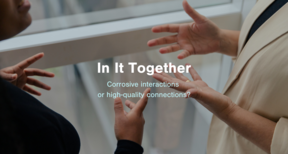
Our connections with others affect our lives: our health, commitment, performance and wellbeing. At its best, connections support a happy life: a good social network has been regularly found to be one of the most significant happiness factors. Good interaction also supports success in work and studies. But do you know what kind of quality you bring to interaction with people? Connecting with others can be practised and developed, just like any other skill.
Active, deep listening conveys interest in the speaker. In active listening, the listener gives the speaker space and asks questions to help the speaker clarify and crystallize their thoughts. A elanorating question could be, for example, "What do you think is the most important aspect of this?" or "How do you think this matter should be handled in the future?"
In addition to body language, presence, and listening, the choice of words is essential. A genuine thank you for a job well done strengthens the connection. So, connecting with others can be developed by building trust through psychological safety.
High-quality connections
American business economics and psychology professor Jane Dutton has focused her award-winning research on interaction in the workplace. Dutton and her colleagues are convinced that any successful interaction can lead to a high-quality connection with another person. Our behaviour in each situation also changes the quality of the connection.
Studies support the positive importance of high-quality connections in life. Even short encounters can improve our working memory and information processing speed. High-quality connections can also help us develop and grow as humans and connect to communities and organizations around us. They also impact our health, as they support the functioning of the heart, blood vessels and immune systems. We recover and adapt faster when facing an illness or experiencing various transitions in life.
How can we create good relationships with others through our actions?
We are good at interpreting messages from others' behaviour, so it is good to pause to think about what we are actually communicating. We communicate respect by being truly present in situations and looking for opportunities to compliment and praise others. A high-quality relationship often starts with being genuine and bravely showing vulnerability. Respect is also communicated by effective listening and supporting communication without demands.
Aalto has invested in interaction in recent years. Jari Ylitalo, university lecturer at Aalto's Department of Industrial Engineering and Management, says that the community, its values and the importance of wellbeing are more discussed, also at the management level. These days students are seen as a key part of the university community.
According to Jane Dutton, building connections is heavily based on our actions. She emphasizes the importance of 'task enabling' activities, which consist of five general strategies:
- Teaching refers to providing the right kind of information so that people can do their tasks more effectively.
- Designing enables people to select and organize their work so that it becomes more interesting and motivating.
- Advocating helps people navigate the company's political contexts.
- Accommodating focuses on altering the timing or process of one's activities so that others can also succeed with their work.
- Nurturing focuses on individuals' development needs so that they can perform more efficiently.
The starting point for everything is, of course, respect and reciprocity, as well as right timing. Otherwise, e.g. teaching or nurturing could turn into bullying. Perhaps Dutton's model could be supplemented with Meg Warren's research on how to be a good ally. The virtues of an ally, such as compassion, fairness, humility and prudence, help to approach task enabling with respect for the wishes of others.
What kind of interaction is corrosive?
Corrosive relationships can be considered the opposite of a high-quality connection. A corrosive relationship is signalled by belittling, imitation, name-calling and hostile humour at worst. We may also unintentionally behave in a harmful way towards others. This can happen when we don't show gratitude or appreciation, ignore people or their work, or exercise power over others.
In Aalto, Jari Ylitalo mentions the considerable performance pressures in an academic career as factors hindering interaction. They can easily reduce opportunities for high-quality connections. Ylitalo also says that the post-corona hybrid era has brought its challenges to finding real encounters and maintaining community.
In corrosive interaction, we break the trust of another person. The antidote, naturally, is strengthening trust. According to Jane Dutton, the creation of trust starts from behaving among others in a trusting manner, without others needing first to prove that they are worthy of it. This creates a self-perpetuating circle of trust. It also saves a lot of our energy when we don't constantly doubt others.
Psychological safety as a basis for interaction
In recent years, the concepts of safe space and psychological safety have become topics for research and general discussion. Psychological safety refers to feelings of belonging, trust, shared direction, as well as a desire to learn and contribute to the community. It is vital to know what comes of taking risks; are opinions and suggestions treated constructively and with appreciation, or do they result in resentment and unsafety?
Although psychological safety has been proven to affect how ready for change people are and how innovative they become, the results of psychological safety on efficiency and learning are contradictory and need further research. It seems that psychological safety in the workplace and in educational institutions provides good grounds for developing, learning and reaching top performances, but does not create them.
The way we behave, the things we do and the manner we deal with others matter. Maybe the next time we meet another person, we can act with respect and be genuinely present. That way, we can send messages of acceptance and support. A high-quality connection might take us by surprise!
References
Carmeli, A., Brueller, D., & Dutton, J. E. (2009). Learning behaviours in the workplace: The role of high‐quality interpersonal relationships and psychological safety. Systems Research and Behavioral Science: The Official Journal of the International Federation for Systems Research, 26(1), 81-98.
Dutton, J.E. (2003). Energize Your Workplace: How to Create and Sustain High-Quality Connections at Work. San Francisco: Jossey-Bass Publishers.
Edmondson, A. C. & Z. Lei (2014). Psychological safety: The history, renaissance, and future of an interpersonal construct. Annual Review of Organizational Psychology and Organizational Behaviour 1:1, 23–43.
Kim, S., Lee, H., & Connerton, T. P. (2020). How psychological safety affects team performance: mediating role of efficacy and learning behavior. Frontiers in psychology, 11, 1581.
McKinsey & Company, (2021). Psychological safety and the critical role of leadership development, https://www.mckinsey.com/capabilities/people-and-organizational-performance/our-insights/psychological-safety-and-the-critical-role-of-leadership-development, (5.2.2023.)
Mineo, L. (2017). Good genes are nice, but joy is better. The Harvard Gazette 11.4. https://news.harvard.edu/gazette/story/2017/04/over-nearly-80-years-harvard-study-has-been-showing-how-to-live-a-healthy-and-happy-life/ (5.2.2023)
Stephens, J.P., Heaphy, E. & Dutton, J.E, (2011). High Quality Connections. In K. Cameron and G. Spreitzer (Eds.), Handbook of Positive Organizational Scholarship. Cambridge: Oxford University Press.
Warren, M.A. and Warren, M.T. (2021). The EThIC model of virtue-based allyship development: A new approach to equity and inclusion in organizations. Journal of Business Ethics, 182:783-803.
Related news

Erasmus Staff Training: A deep dive into joint programmes and wellbeing
Over 30 participants from 17 universities gathered at the Aalto University campus early June for the Erasmus Staff Training Days.
Teachers can support students’ intrinsic motivation in a number of ways
Lack of motivation to study is the most common reason for business students to contact a study psychologist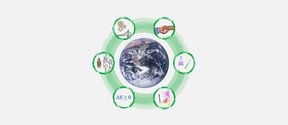
Aalto’s New Cross-Cutting Minor: Sustainable Use of Natural Resources (Luonnonvarojen kestävä käyttö)
Aalto’s new multidisciplinary minor, Sustainable Use of Natural Resources (Luonnonvarojen kestävä käyttö) is ready to add to your study plan!
Break Pro -break exercise program adds movement to the day – more videos available now!
Break Pro -break exercise program adds movement to the dayRelated events at Aalto
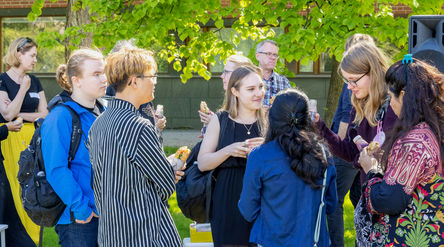
Aalto Welcome Fair 2024
Welcome, new students, to the Aalto Welcome Fair on 29th August 2024!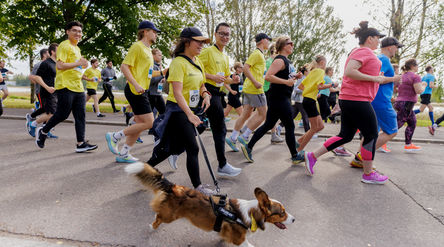
Aalto walk & run sports event on Saturday 21.9.2024
Join the whole Aalto community's free of charge sports event! 10 or 5K walking or running – you choose. This year a new Aalto walk 5K.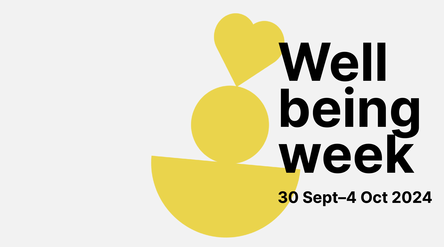
Aalto Wellbeing Week 2024
Check all the events during Wellbeing Week- Published:
- Updated: